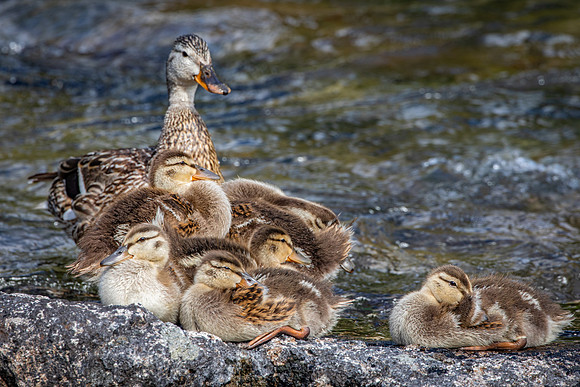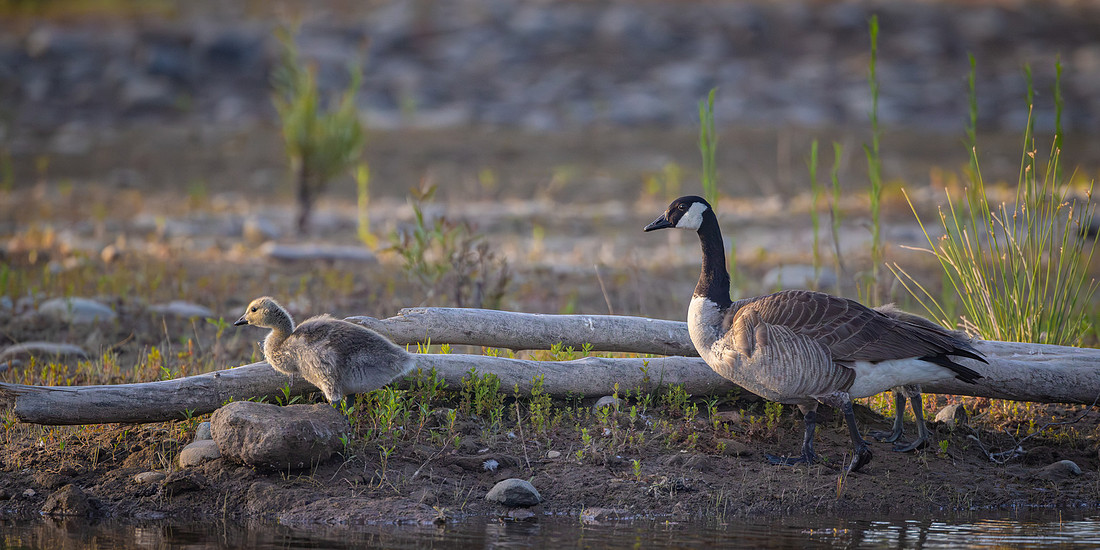The Art of Wildlife Parenting
The Art of Wildlife Parenting: A Practical Look at Survival and Strategy
Text and photos by Heather Cline
 
A Brown Bear sow leads her cubs on a safe path along the river |
In nature, parenting is a survival strategy. Each species has developed its own approach to raising young, shaped by habitat, threats, and evolutionary pressures. These behaviors don’t just affect individual families—they influence population dynamics, habitat use, and ecosystem function. For photographers and field observers, documenting these moments offers insight into how species persist and adapt.
Mammals: From Solitary Defense to Social Support
- Bobcats and Moose: Rely on seclusion and maternal defense. Bobcat mothers choose hidden dens and relocate their young if needed. Moose calves are born in dense cover, and mothers will charge predators to protect them.
- Wolves, Coyotes, and Foxes: Use cooperative care. Packs raise wolf and coyote pups together. Fox kits benefit from both parents—fathers deliver food, mothers teach hunting through play.
Birds: Diverse Strategies in Action
- Acorn Woodpeckers: Raise chicks in cooperative groups, defending shared granary trees.
- Mallards and Mergansers: Lead ducklings to water shortly after hatching, relying on imprinting and mobility rather than feeding.
- Canada Geese and Sandhill Cranes: Both parents guide and protect young over months, teaching foraging and migration.
Solitary Species: Quiet but Active Parenting
- Sloths: Carry young for weeks and teach feeding habits by example.
- Harbor Seals: Nurse pups with high-fat milk and stay nearby as they learn to swim and dive.
Ecological Impact: Parenting Beyond the Nest
- Wolves: Regulate prey populations, affecting vegetation and water systems. Migratory Birds: Distribute nutrients across landscapes.
- Woodpeckers: Support forest regeneration through granary trees.
- Bobcats and Sloths: Help maintain predator-prey balance and seed dispersal in fragmented habitats.
Wildlife parenting is as diverse as the landscapes these animals call home. Whether through teamwork, quiet guidance, or protection, each species has evolved its own way of raising young. These behaviors ensure survival and shape healthy ecosystems.







